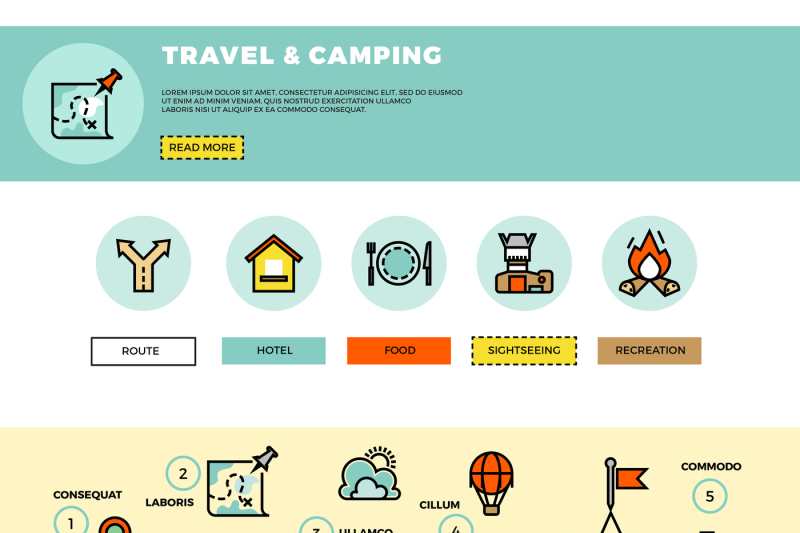If you're considering taking on the challenge of winter camping, you require the best equipment to stay cozy and comfortable. Along with top quality four-season camping tents like canvas wall camping tents from Sheltent, there are a couple of other points you can do to insulate your camp.
Shielding your camping tent lowers fast temperature loss and avoids hypothermia. Below are 7 effective means to do it:
Floor Insulation
The flooring of an outdoor tents can easily end up being cold and uneasy, specifically in winter. You can safeguard on your own from this by laying a thick layer of insulated foam or sleeping pads on the ground. These are really lightweight and use up extremely little area, so they can easily be packed in your outdoor camping bag.
An additional great concept for an outdoor tents floor is to use reflective mylar sheets, which will certainly mirror body heat back inside the camping tent. However know that these sheets do not quit your body from losing heat through straight contact with the chilly ground.
A tarpaulin additionally provides a good level of insulation for the camping tent flooring. Nevertheless, if you utilize one, make sure that it is not expanding past the sides of your outdoor tents so that rain and snow do not pool below your camping tent. Likewise, beware not to overseal your outdoor tents, as this can create too much moisture and condensation that can be difficult to manage.
Wall Insulation
When a tent is insulated, it's simpler for the residents to maintain warmth. This helps with comfort, reduces the chance of cold air intrusion, and prevents condensation and mold.
Camping tent insulation can help a camping trip go smoothly by maintaining a warm environment for sleep and activities. It also safeguards against rapid temperature loss, which leads to pain and potential health risks, such as hypothermia.
A camping tent can be insulated by adding a number of different materials to it. Some of these work in lowering conductive warmth transfer, and consist of fiberglass insulation and cellulose insulation.
A few of these methods are more sensible than others, yet any kind of can substantially enhance the comfort of your camping experience. As an example, laying an artificial rug on the floor of your outdoor tents or making use of a home heating rug can be an easy way to shield it versus the chilly ground. Alternatively, you can utilize a sheathing and insulation panel (SIP) made from foam board and oriented strand board.
Roof Insulation
Invest in a four-season outdoor tents created to stand up to snow, ice and freezing wind. They'll stand up to warmth transfer and keep cold air out much better than conventional tents.
Locate a location to pitch your tent where there are natural obstacles to the wind, such as trees or bushes. Alternatively, construct a windbreak wall surface using rocks or perhaps snow, leaving air flow gaps.
Use a reflective lining in your camping tent to reflect the sunlight's rays far from the camping tent, decreasing the amount of warmth it soaks up. This easy trick will certainly make a substantial difference in your outdoor tents's comfort.
Consider a selection of insulation materials, from budget-friendly blanket insulation to foam spray and SIPs. Each has its very own advantages, yet aspects like budget restraints, simplicity of installation, and dampness resistance ought to all be considered very carefully. Insulation professionals can aid you assess your options and select the best suitable for your job.
Footprint
The flooring of your camping tent can get cool and damp, so shielding it is essential. There are a number of methods to do this, including making use of tent impacts and heating floor coverings. Footprints are crucial camping devices that protect the flooring of your camping tent from dampness damage and abrasion, dramatically prolonging its life-span and enhancing your total camping experience.
Outdoor tents footprints vary from ground tarps because they're specifically customized to a particular outdoor tents model, including attachment canvas sling bag points or grommets that align with outdoor tents corners and risks for secure accessory. They're additionally usually made from durable materials such as polyethylene (PE), nylon, silnylon, or Dyneema for durable use and optimum security.
When picking a camping tent impact, select one that carefully matches your tent's dimensions and is sized slightly smaller to avoid water from merging beneath the outdoor tents when it rains. When staking down your camping tent, put any excess footprint product under the camping tent to stop moisture from going into via the gap.
